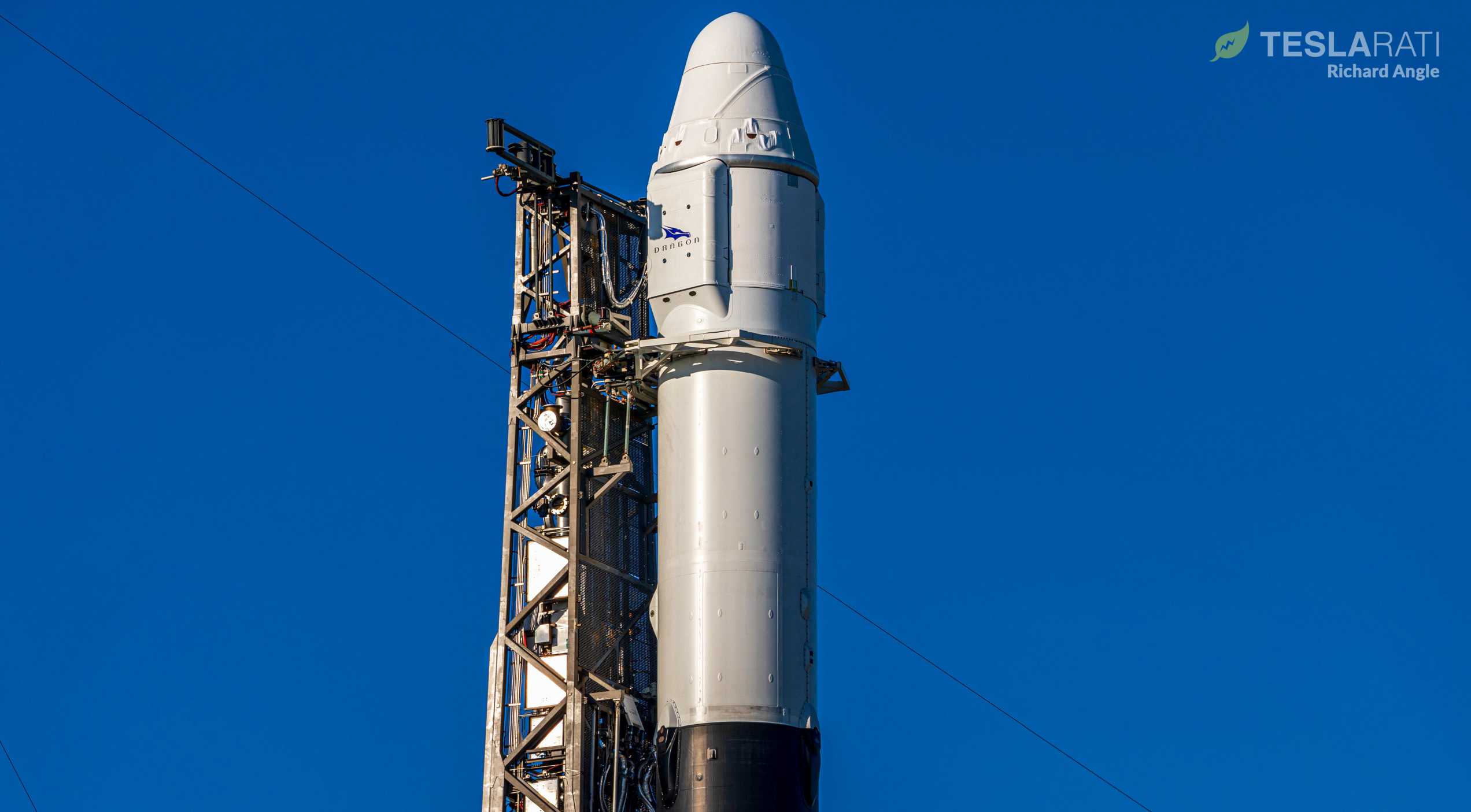
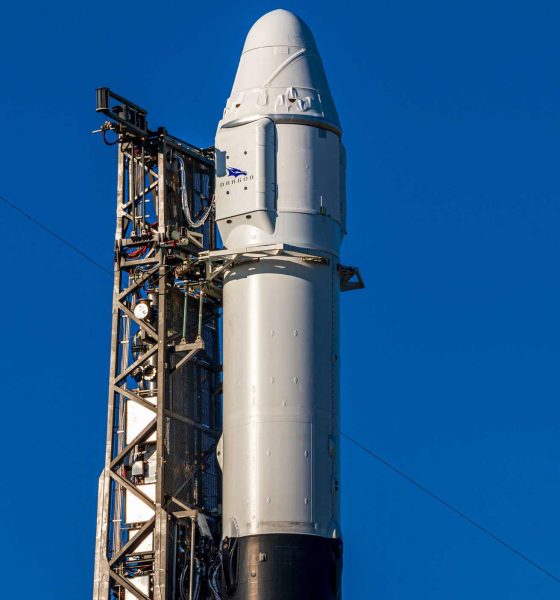
News
SpaceX Starlink launch ambitions just saved a space station resupply mission from bigger delays
SpaceX’s ambitious 2020 Starlink launch goals have unintentionally saved a Cargo Dragon spacecraft mission from much longer delays after a major part of its Falcon 9 rocket had to be replaced at the last second.
Known as SpaceX’s 20th NASA Commercial Resupply Services (CRS-20) mission, SpaceX’s Cargo Dragon spacecraft was initially scheduled to launch supplies to the International Space Station (ISS) as early as March 2nd, 2020, a date that recently slipped four days to 11:50 pm EDT (04:50 UTC), March 6th. Simultaneously, a separate Falcon 9 Starlink mission – assigned to a different launch pad – found itself delayed from March 4th to March 11th.
A day or so after news of the CRS-20 launch delay first broke, NASA published a blog post noting that SpaceX had taken the extraordinary step of fully replacing the mission’s Falcon 9 second stage, the part of the rocket (pictured underneath Dragon in the photo above) tasked with taking payloads from the edge of space into Earth orbit (or beyond). Triggered by a faulty component in its space-optimized Merlin Vacuum engine, the fact that SpaceX chose to replace the upper stage and still only delayed CRS-20’s launch by four days suggests that its ambitious Starlink launch plans are already creating positive side effects for commercial customers.
"SpaceX identified a valve motor on the second stage engine behaving not as expected and determined the safest and most expedient path to launch is to utilize the next second stage in line that was already at the Cape and ready for flight."https://t.co/E9dokEAf0n— Michael Baylor (@MichaelBaylor_) February 25, 2020

As of late, multi-day hardware-related launch delays have been rather rare for SpaceX, who has instead suffered numerous weather-related scrubs over the course of completing its Fall 2019 and Winter 2020 launch manifest. SpaceX’s February 17th Starlink-4 mission did suffer a minor second stage valve-related delay that was fixed in about 24 hours, but things have otherwise been quite smooth for Falcon 9.
Given all that goes into building and testing Falcon 9 second stages, there are very few good explanations (aside from pure luck) that would allow for a given SpaceX launch to entirely replace its assigned second stage a week before liftoff and only slip a handful of days. Nevertheless, with CRS-20, SpaceX is attempting to do exactly that.
“SpaceX identified a valve motor on the second stage engine behaving not as expected and determined the safest and most expedient path to launch is to utilize the next second stage in line that was already at the Cape and ready for flight. The new second stage has already completed the same preflight inspections with all hardware behaving as expected. The updated target launch date provides the time required to complete preflight integration and final checkouts.”
NASA.gov — February 25th, 2020
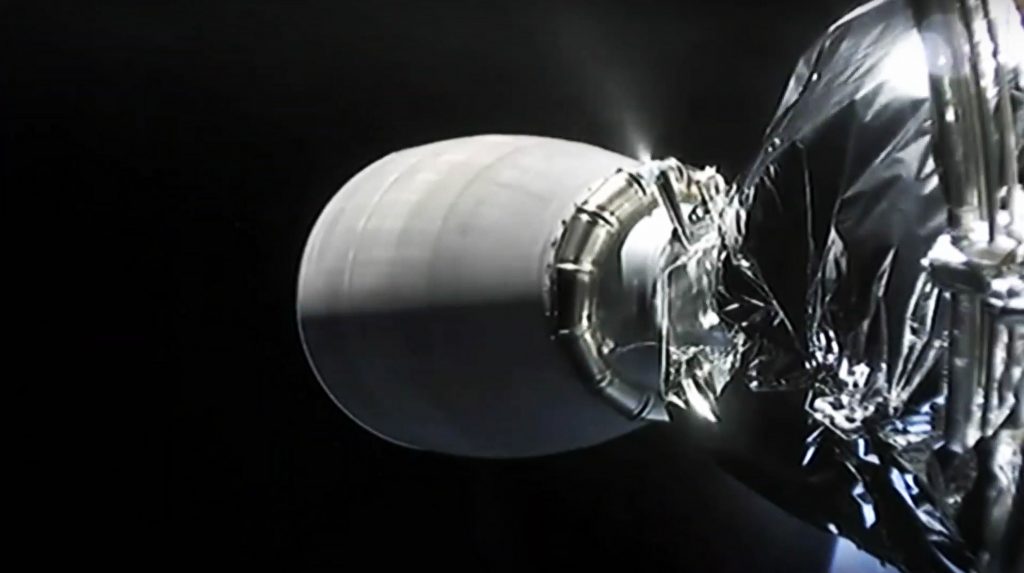
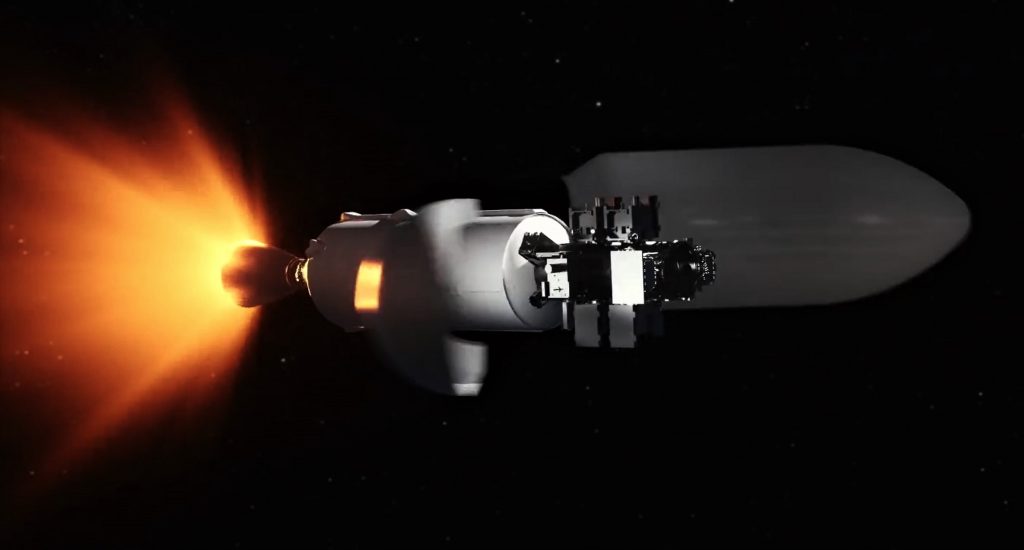
The specific lead times SpaceX’s Falcon rocket family parts require is almost totally unknown but it’s safe to say that the process of building a Falcon upper stage from scratch, performing acceptance testing in Texas, and shipping said stage to the launch pad takes months from start to finish. For SpaceX to be able to attempt to minimize CRS-20’s delays to just four days while still fully swapping out its upper stage, the company would have quite literally had to have had another Falcon stage just sitting around in Florida.
As it turns out, per NASA’s official statement, that is precisely what transpired. A separate second stage was already in Florida and “ready for flight”, giving SpaceX the luxury of selecting the safest option theoretically available. Beyond the hardware already being ready to go in Florida, the stage reassignment almost certainly also hinged upon the mission it was assigned to being somewhat nonessential – a label that SpaceX would be hard-pressed to affix to any of its customers’ launches. An internal Starlink mission, however, would be a perfect opportunity, allowing SpaceX to avoid both picking favorites and seriously impacting (aside from the ~4-day CRS-20 delay) its paying customers.
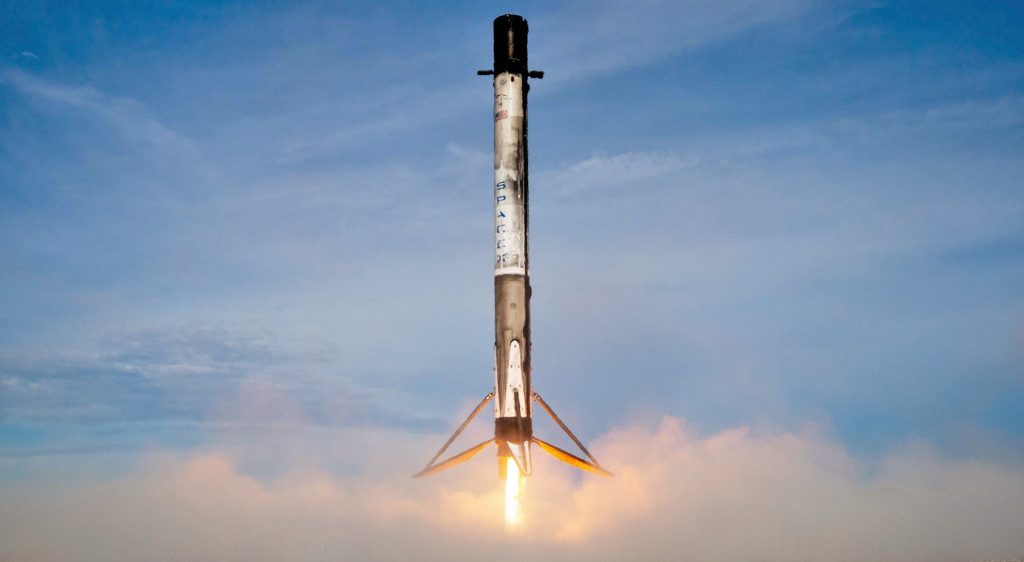
To be clear, SpaceX was thus able to swap out CRS-20’s upper stage at the last second with only a minor schedule impact almost exclusively because of it’s ambitious plans for 20-24 Starlink launches this year. If the company wasn’t pursuing a more than biweekly 2020 launch cadence, it’s much more likely that CRS-20 would have had to make do with its second stage or wait for a new one to be built, potentially delaying the launch by one or two weeks, if not longer.
In simple terms, the launch cadence SpaceX is targeting (and needs) for its Starlink constellation is already exhibiting signs of a future where its high-performance orbital-class rockets have been almost entirely commodified.
Check out Teslarati’s Marketplace! We offer Tesla accessories, including for the Tesla Cybertruck and Tesla Model 3.

News
Tesla (TSLA) receives “Buy” rating and $551 PT from Canaccord Genuity
He also maintained a “Buy” rating for TSLA stock over the company’s improving long-term outlook, which is driven by autonomy and robotics.

Canaccord Genuity analyst George Gianarikas raised his Tesla (NASDAQ:TSLA) price target from $482 to $551. He also maintained a “Buy” rating for TSLA stock over the company’s improving long-term outlook, which is driven by autonomy and robotics.
The analyst’s updated note
Gianarikas lowered his 4Q25 delivery estimates but pointed to several positive factors in the Tesla story. He noted that EV adoption in emerging markets is gaining pace, and progress in FSD and the Robotaxi rollout in 2026 represent major upside drivers. Further progress in the Optimus program next year could also add more momentum for the electric vehicle maker.
“Overall, yes, 4Q25 delivery expectations are being revised lower. However, the reset in the US EV market is laying the groundwork for a more durable and attractive long-term demand environment.
“At the same time, EV penetration in emerging markets is accelerating, reinforcing Tesla’s potential multi‑year growth runway beyond the US. Global progress in FSD and the anticipated rollout of a larger robotaxi fleet in 2026 are increasingly important components of the Tesla equity story and could provide sentiment tailwinds,” the analyst wrote.
Tesla’s busy 2026
The upcoming year would be a busy one for Tesla, considering the company’s plans and targets. The autonomous two-seat Cybercab has been confirmed to start production sometime in Q2 2026, as per Elon Musk during the 2025 Annual Shareholder Meeting.
Apart from this, Tesla is also expected to unveil the next-generation Roadster on April 1, 2026. Tesla is also expected to start high-volume production of the Tesla Semi in Nevada next year.
Apart from vehicle launches, Tesla has expressed its intentions to significantly ramp the rollout of FSD to several regions worldwide, such as Europe. Plans are also underway to launch more Robotaxi networks in several more key areas across the United States.
News
Waymo sues Santa Monica over order to halt overnight charging sessions
In its complaint, Waymo argued that its self-driving cars’ operations do not constitute a public nuisance, and compliance with the city’s order would cause the company irreparable harm.

Waymo has filed a lawsuit against the City of Santa Monica in Los Angeles County Superior Court, seeking to block an order that requires the company to cease overnight charging at two facilities.
In its complaint, Waymo argued that its self-driving cars’ operations do not constitute a public nuisance, and compliance with the city’s order would cause the company irreparable harm.
Nuisance claims
As noted in a report from the Los Angeles Times, Waymo’s two charging sites at Euclid Street and Broadway have operated for about a year, supporting the company’s growing fleet with round-the-clock activity. Unfortunately, this has also resulted in residents in the area reportedly being unable to sleep due to incessant beeping from self-driving taxis that are moving in and out of the charging stations around the clock.
Frustrated residents have protested against the Waymos by blocking the vehicles’ paths, placing cones, and “stacking” cars to create backups. This has also resulted in multiple calls to the police.
Last month, the city issued an order to Waymo and its charging partner, Voltera, to cease overnight operations at the charging locations, stating that the self-driving vehicles’ activities at night were a public nuisance. A December 15 meeting yielded no agreement on mitigations like software rerouting. Waymo proposed changes, but the city reportedly insisted that nothing would satisfy the irate residents.
“We are disappointed that the City has chosen an adversarial path over a collaborative one. The City’s position has been to insist that no actions taken or proposed by Waymo would satisfy the complaining neighbors and therefore must be deemed insufficient,” a Waymo spokesperson stated.
Waymo pushes back
In its legal complaint, Waymo stated that its “activities at the Broadway Facilities do not constitute a public nuisance.” The company also noted that it “faces imminent and irreparable harm to its operations, employees, and customers” from the city’s order. The suit also stated that the city was fully aware that the Voltera charging sites would be operating around the clock to support Waymo’s self-driving taxis.
The company highlighted over one million trips in Santa Monica since launch, with more than 50,000 rides starting or ending there in November alone. Waymo also criticized the city for adopting a contentious strategy against businesses.
“The City of Santa Monica’s recent actions are inconsistent with its stated goal of attracting investment. At a time when the City faces a serious fiscal crisis, officials are choosing to obstruct properly permitted investment rather than fostering a ‘ready for business’ environment,” Waymo stated.
News
Tesla FSD v14.2.2 is getting rave reviews from drivers
So far, early testers have reported buttery-smooth drives with confident performance, even at night or on twisty roads.

Tesla Full Self-Driving (Supervised) v14.2.2 is receiving positive reviews from owners, with several drivers praising the build’s lack of hesitation during lane changes and its smoother decision-making, among others.
The update, which started rolling out on Monday, also adds features like dynamic arrival pin adjustment. So far, early testers have reported buttery-smooth drives with confident performance, even at night or on twisty roads.
Owners highlight major improvements
Longtime Tesla owner and FSD user @BLKMDL3 shared a detailed 10-hour impression of FSD v14.2.2, noting that the system exhibited “zero lane change hesitation” and “extremely refined” lane choices. He praised Mad Max mode’s performance, stellar parking in locations including ticket dispensers, and impressive canyon runs even in dark conditions.
Fellow FSD user Dan Burkland reported an hour of FSD v14.2.2’s nighttime driving with “zero hesitations” and “buttery smooth” confidence reminiscent of Robotaxi rides in areas such as Austin, Texas. Veteran FSD user Whole Mars Catalog also demonstrated voice navigation via Grok, while Tesla owner Devin Olsen completed a nearly two-hour drive with FSD v14.2.2 in heavy traffic and rain with strong performance.
Closer to unsupervised
FSD has been receiving rave reviews, even from Tesla’s competitors. Xpeng CEO He Xiaopeng, for one, offered fresh praise for FSD v14.2 after visiting Silicon Valley. Following extended test drives of Tesla vehicles running the latest FSD software, He stated that the system has made major strides, reinforcing his view that Tesla’s approach to autonomy is indeed the proper path towards autonomy.
According to He, Tesla’s FSD has evolved from a smooth Level 2 advanced driver assistance system into what he described as a “near-Level 4” experience in terms of capabilities. While acknowledging that areas of improvement are still present, the Xpeng CEO stated that FSD’s current iteration significantly surpasses last year’s capabilities. He also reiterated his belief that Tesla’s strategy of using the same autonomous software and hardware architecture across private vehicles and robotaxis is the right long-term approach, as it would allow users to bypass intermediate autonomy stages and move closer to Level 4 functionality.








